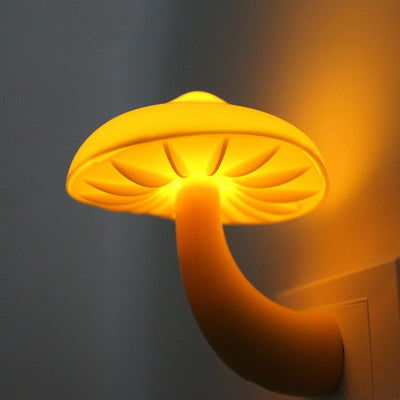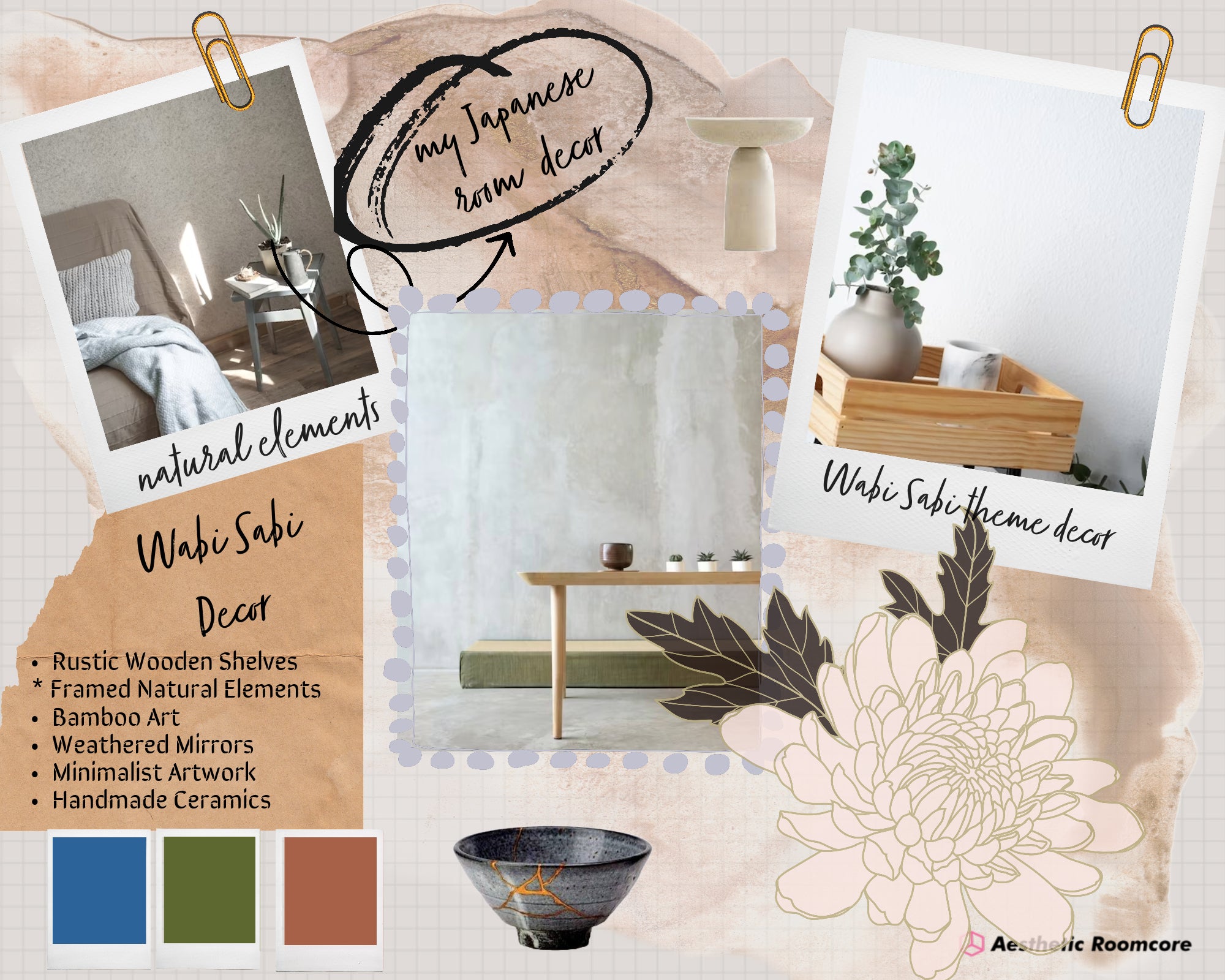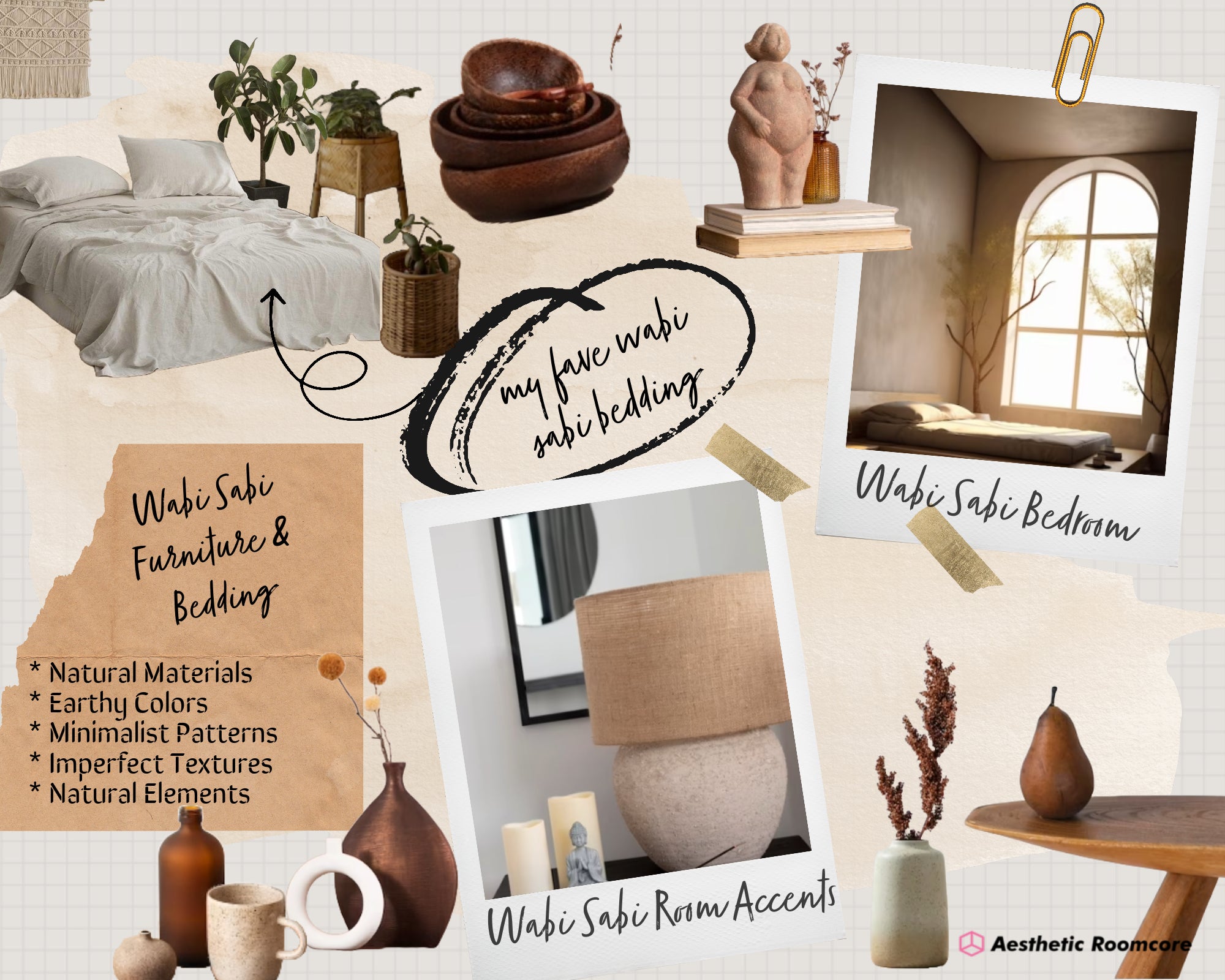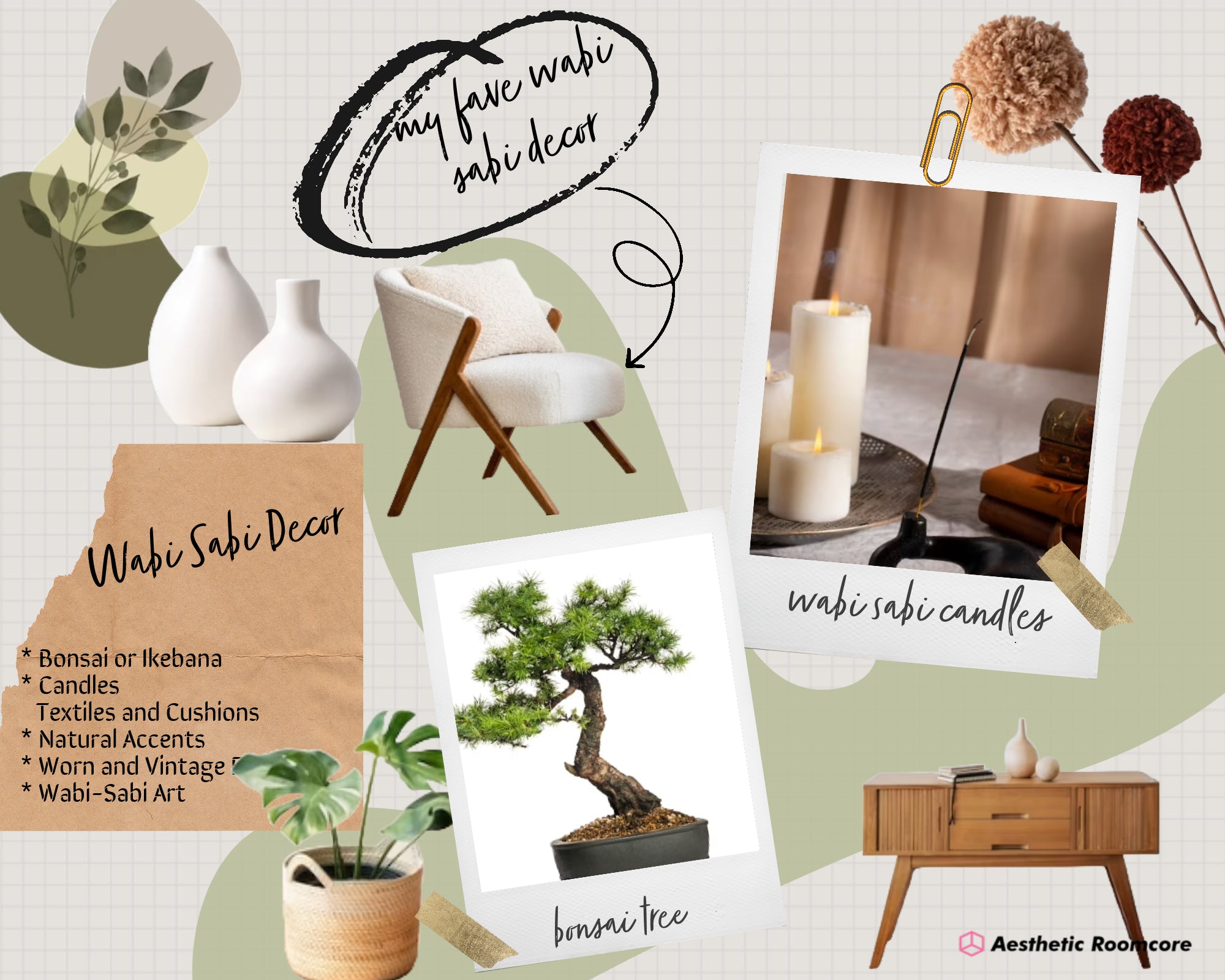Aesthetic Japanese Room Decor | Wabi Sabi Decor
Discover the Tranquil Beauty of Wabi Sabi Decor in our latest blog. Explore the essence of Japanese aesthetics as we delve into the art of embracing imperfection, simplicity, and the transient nature of life through Wabi Sabi room decor.
JAPANESE / WABI SABI ROOM DECOR
Japanese/Wabi Sabi room decor is a design style that draws inspiration from Japanese aesthetics, specifically the principles of Wabi Sabi. Wabi Sabi is a Japanese philosophy that values imperfection, simplicity, and the transitory nature of life. In room decor, this style emphasizes the beauty of natural materials like wood, stone, and ceramics, often in their unadorned and unrefined forms. It celebrates imperfections, such as weathered surfaces or irregularities, as they tell a story and add depth to the decor. Japanese/Wabi Sabi room decor favors a muted color palette, asymmetry, and minimalism, creating a serene and tranquil living space. It often incorporates elements from nature, like potted plants or dried flowers, and encourages a sense of mindfulness, appreciating the fleeting beauty of each moment. The result is a space that exudes a sense of calm, authenticity, and an appreciation for the ordinary.
ALL YOU NEED TO KNOW ABOUT JAPANESE / WABI SABI ROOM DECOR
#1 Japanese / Wabi Sabi color palette
Wabi-Sabi is a Japanese aesthetic that celebrates the beauty of imperfection, transience, and simplicity. It often emphasizes natural elements, muted colors, and a sense of serenity. The Wabi-Sabi color palette typically includes subtle, earthy tones and muted shades. Here are some colors commonly associated with Wabi-Sabi:
-
Aegean Blue: A soft, muted blue reminiscent of the sea and the sky.
-
Olive Green: A warm, earthy green that reflects the color of moss and leaves.
-
Earthy Brown: Various shades of brown, such as taupe, ochre, and sienna, evoke the earth and nature.
-
Stone Gray: Soft, neutral grays that resemble weathered rocks and stone.
-
Slate Blue: A grayish-blue hue reminiscent of aged pottery and ceramics.
-
Soft Beige: A calming, neutral beige that suggests simplicity and warmth.
-
Pale Pink: A subtle, dusty pink that symbolizes the transience of life.
-
Subdued Gray-Green: A muted gray-green, representing the color of aged leaves and vegetation.
-
Rustic Red: A muted, earthy red that can resemble the patina of aged wood.
-
Neutral White: Soft, off-white shades that evoke the idea of simplicity and purity.
These colors are often used in combination to create a harmonious and tranquil atmosphere in Wabi-Sabi-inspired interior design, art, and other creative expressions. The key is to keep the palette understated, with a focus on the natural and organic, and to appreciate the beauty that emerges from the passage of time and the imperfections of life.
#2 Japanese / Wabi Sabi wall decor
Wabi-Sabi wall decor embraces the principles of simplicity, imperfection, and an appreciation for the natural world. Here are some ideas for creating Wabi-Sabi-inspired wall decor:
-
Rustic Wooden Shelves: Install simple, weathered wooden shelves on your walls. Arrange them with a few carefully chosen items like old books, weathered pottery, or natural objects like driftwood or stones. This minimalist approach captures the essence of Wabi-Sabi.
-
Framed Natural Elements: Frame dried, pressed leaves, flowers, or other organic materials. Hang them on your wall to celebrate the beauty of impermanence and nature's cycles.
-
Bamboo Art: Bamboo is a symbol of Wabi-Sabi aesthetics. Consider hanging bamboo art, such as simple bamboo scrolls or framed bamboo prints, on your walls to infuse a sense of simplicity and nature.
-
Weathered Mirrors: Aged, weathered mirrors with distressed frames can add a touch of elegance while maintaining the Wabi-Sabi aesthetic. These mirrors reflect the imperfections of life.
-
Minimalist Artwork: Choose artwork that features minimalist designs, muted colors, and a sense of serenity. Paintings or prints that depict natural scenes like landscapes, still life, or traditional Japanese calligraphy can work well.
-
Textile Wall Hangings: Consider hanging textile wall hangings made from natural materials like linen or burlap. These can add texture and warmth to your space. Look for pieces with subtle patterns or embroidery.
-
Handmade Ceramics: Display handmade pottery or ceramics with irregular shapes and earthy glazes. These pieces can add a sense of imperfection and uniqueness to your wall decor.
-
Worn Vintage Photographs: Use vintage or antique photographs, preferably in black and white, to evoke a sense of nostalgia and the passage of time. Frame them in weathered or reclaimed wood frames.
-
Japanese Screens (Byobu): Japanese folding screens, known as "byobu," can make an excellent statement piece. They often feature traditional motifs or landscapes and can add an authentic touch to your decor.
-
Worn or Aged Wallpaper: Consider using wallpaper with a weathered, worn, or distressed look. This can add a touch of authenticity and age to your walls.
-
Paper Lanterns: Traditional Japanese paper lanterns can provide soft, diffused light and create a calming ambiance in a room. Hang them from the ceiling or mount them on the wall.
-
Wabi-Sabi Quotes or Poetry: Frame quotes or poetry that align with Wabi-Sabi principles. These can serve as a daily reminder of the beauty in imperfection and simplicity.
Remember that the key to achieving Wabi-Sabi wall decor is embracing imperfection, simplicity, and the beauty that arises from the passage of time. Select items that resonate with you personally and evoke a sense of tranquility and authenticity in your living space.
#3 Japanese / Wabi Sabi bedding
Wabi-Sabi bedding should embody the simplicity, natural elements, and imperfection associated with the Wabi-Sabi aesthetic. When choosing bedding that aligns with Wabi-Sabi principles, consider the following elements:
-
Natural Materials: Opt for bedding made from natural materials like linen, cotton, or organic fibers. These materials not only have a tactile and visual appeal but also contribute to the authenticity of Wabi-Sabi design.
-
Earthy Colors: Choose bedding in earthy, muted tones that evoke the natural world. Shades of soft gray, subdued green, pale brown, and off-white are excellent choices. These colors should be calming and harmonious.
-
Minimalist Patterns: Avoid bold, busy patterns and opt for subtle or minimalist designs. Simple stripes, irregular textures, or faded prints can add a touch of visual interest without overwhelming the space.
-
Layering: Embrace the Japanese concept of "kakebuton" or layering your bedding. Layer a simple, neutral-toned duvet or comforter with a natural-textured blanket or throw for a cozy, inviting look.
-
Imperfect Textures: Look for bedding with a tactile quality that highlights the beauty of imperfection. Woven, slightly wrinkled, or slightly uneven textures in the fabric can add depth and character.
-
Handmade or Artisanal Pieces: If possible, invest in handmade or artisanal bedding. Hand-dyed or handwoven textiles often have unique variations and imperfections that align with the Wabi-Sabi aesthetic.
-
Frayed Edges: Bedding with frayed or raw edges can convey a sense of authenticity and age. These details give a sense of the passage of time and the beauty of wear and tear.
-
Natural Dyeing Techniques: Seek out bedding that uses natural dyeing techniques. This can result in soft, muted colors that reflect the Wabi-Sabi palette.
-
Quilts and Patchwork: Quilts or bedding with a patchwork design can add a sense of history and storytelling to your bedroom. These may incorporate scraps of fabric with their own unique imperfections.
-
Pillows and Cushions: Use pillows and cushions in a mix of shapes and sizes. Consider using cushions with simple, hand-stitched designs or ones that incorporate traditional Japanese textile patterns.
-
Worn or Aged Look: Bedding with a worn or aged appearance can create an authentic Wabi-Sabi ambiance. This can be achieved through distressing, fading, or antiquing techniques.
-
Natural Elements: Incorporate natural elements into your bedding decor, such as dried flowers or branches placed in a simple vase on your bedside table.
When it comes to arranging your Wabi-Sabi bedding, remember that the imperfections and the sense of transience are what make it beautiful. Don't worry about perfectly made beds; instead, aim for a relaxed and lived-in appearance. The key is to create a serene, uncluttered, and tranquil sleeping space that reflects the simplicity and appreciation for imperfection that are central to Wabi-Sabi.
#4 Japanese / Wabi Sabi room decor
Wabi-Sabi room decor is all about embracing imperfection, simplicity, and a deep appreciation for the natural world. Here are some ideas to help you create a Wabi-Sabi-inspired room:
-
Natural Materials: Choose furniture, flooring, and decor made from natural materials like wood, stone, bamboo, and handmade textiles. These materials often have visible grain, texture, and irregularities that add to the Wabi-Sabi aesthetic.
-
Earthy Colors: Stick to a muted and earthy color palette. Shades of soft gray, muted greens, pale browns, and subtle, earthy blues are commonly associated with Wabi-Sabi. These colors create a calm and harmonious atmosphere.
-
Minimalist Furniture: Select furniture with simple, clean lines and unadorned designs. Avoid overly ornate or overly polished pieces. Look for furniture with a weathered, rustic, or vintage appearance.
-
Open Space: Create an open, uncluttered space that allows for mindfulness and appreciation of the present moment. Less is often more in Wabi-Sabi decor.
-
Natural Light: Allow as much natural light as possible into the room. If you use window coverings, opt for simple, unobtrusive options that can be easily opened to let in the light.
-
Handmade and Artisanal Decor: Incorporate handmade or artisanal decor items. These might include pottery, ceramics, textiles, and other items with unique imperfections and a sense of craftsmanship.
-
Imperfect Textures: Embrace textures that highlight imperfections. Rough plaster walls, hand-stitched textiles, and unfinished wood surfaces can add depth and character to the room.
-
Wabi-Sabi Art: Decorate your walls with art that reflects the Wabi-Sabi spirit. Look for paintings, prints, or sculptures that capture simplicity, the transience of life, and nature's beauty.
-
Worn and Vintage Elements: Incorporate worn or vintage elements, such as antique furniture, weathered rugs, or aged metal accents. These items often carry a sense of history and character.
-
Natural Accents: Use natural elements like driftwood, stones, and dried flowers or branches as decor. These items bring a sense of the outdoors into your space.
-
Japanese Influences: Integrate traditional Japanese elements, such as shoji screens, tatami mats, and sliding doors, to evoke an authentic Japanese ambiance.
-
Textiles and Cushions: Incorporate textiles with a tactile quality, like soft, handwoven throws and cushions with irregular patterns or natural dye variations.
-
Candles and Soft Lighting: Use soft, warm lighting to create a cozy and intimate atmosphere. Candles, paper lanterns, and warm-toned lighting can add to the serenity of the room.
-
Bonsai or Ikebana: Consider a bonsai tree or an ikebana arrangement as a centerpiece. These bring the beauty of nature into your space in an artful way.
-
Unfinished or Raw Wood: If you have exposed wooden elements, leave them in their natural, unfinished state to showcase the beauty of wood grain and knots.
Remember that Wabi-Sabi is not about perfection but about appreciating the beauty in imperfection and the transient nature of life. The key is to create a space that feels unpretentious, peaceful, and connected to the natural world, encouraging mindfulness and a sense of serenity.
JAPANESE / WABI SABI DECOR - FREQUENTLY ASKED QUESTIONS:
#1 Where can i buy Japanese / Wabi Sabi decor for my room?
You can find Japanese and Wabi-Sabi decor items for your room in various places, both online and in physical stores. Here are some options to help you in your search for Wabi-Sabi-inspired decor:
-
Online Marketplaces:
- Aesthetic Roomcore: Our aesthetic room decor online shop offers a wide range of handmade and artisanal Wabi-Sabi decor items, including pottery, textiles, art, and more.
-
Antique and Vintage Shops:
- Antique and vintage stores can be excellent places to find unique, weathered, and one-of-a-kind pieces that fit the Wabi-Sabi style.
-
Thrift Stores and Flea Markets:
- Thrift stores and flea markets often offer a treasure trove of affordable items with character and imperfections that can enhance your Wabi-Sabi decor.
-
Artisan Markets and Craft Fairs:
- Check for local artisan markets and craft fairs, where you can find handmade and artisanal decor items that embody Wabi-Sabi principles.
-
Japanese Specialty Stores:
- If you're looking for authentic Japanese decor, seek out Japanese specialty stores or markets in your area. They may carry traditional Japanese decor elements like shoji screens, tatami mats, or ceramics.
When shopping for Wabi-Sabi decor, keep in mind the principles of simplicity, imperfection, and an appreciation for the natural world. Look for items that resonate with you personally and contribute to a sense of tranquility and authenticity in your living space. Don't be afraid to mix and match different elements to create a unique and harmonious Wabi-Sabi-inspired room.
#2 What other aesthetics include Japanese / Wabi Sabi decor?
Japanese aesthetics often influence and overlap with various other design styles and philosophies. Here ar some design aesthetics and interior decor styles that can include elements of Japanese and Wabi-Sabi decor:
-
Zen Style: Zen design incorporates minimalist, clutter-free spaces, natural elements, and a focus on tranquility. It often includes elements like Japanese rock gardens, bamboo, and simple, unadorned furnishings.
-
Scandinavian Design: Scandinavian design shares a love for minimalism, neutral colors, and functionality with Wabi-Sabi. It often features clean lines, natural materials, and an appreciation for simplicity.
-
Minimalism: Minimalist decor emphasizes simplicity and the removal of excess. It can be influenced by Japanese design principles, including Wabi-Sabi's appreciation for imperfection.
-
Hygge: While not Japanese, the Danish concept of hygge shares some similarities with Wabi-Sabi in its focus on coziness, comfort, and the appreciation of the moment. The use of natural materials and soft lighting is also common in hygge decor.
-
Boho-Chic: A Bohemian or boho-chic style often incorporates handmade and artisanal elements, which can overlap with Wabi-Sabi's love for imperfection and craftsmanship. The layering of textiles and the use of natural materials can also align with both styles.
-
Industrial Style: Industrial decor can draw inspiration from the simplicity and functionality of Japanese design. Raw materials, exposed brick, and a focus on the basics are common in both styles.
-
Rustic and Farmhouse: Rustic and farmhouse decor can include the use of natural materials and an appreciation for the aged and weathered, which align with Wabi-Sabi principles.
-
Cottagecore: Cottagecore decor emphasizes a return to simplicity, a connection with nature, and a love for the handmade. It shares some similarities with the Wabi-Sabi appreciation for imperfection and the natural world.
-
Shabby Chic: Shabby Chic design incorporates vintage and distressed elements, which can overlap with the worn and imperfect qualities of Wabi-Sabi decor.
-
Mid-Century Modern: While more focused on clean lines and modern aesthetics, Mid-Century Modern design can incorporate Japanese and Wabi-Sabi elements through the use of natural materials and simplicity.
-
Eclectic Style: Eclectic decor allows for the mixing and matching of various design elements. It can include Japanese and Wabi-Sabi pieces alongside other styles to create a unique and harmonious aesthetic.
-
Traditional Japanese Decor: Of course, traditional Japanese decor, such as traditional tatami mat flooring, shoji screens, and bonsai plants, embodies Japanese design principles, including Wabi-Sabi.
These design styles often intermingle, and you can create a unique and personalized aesthetic by blending elements of Japanese and Wabi-Sabi decor with other styles that resonate with you. The key is to prioritize the principles that matter most to you, whether it's minimalism, simplicity, imperfection, or an appreciation for nature and craftsmanship.




































Leave a comment